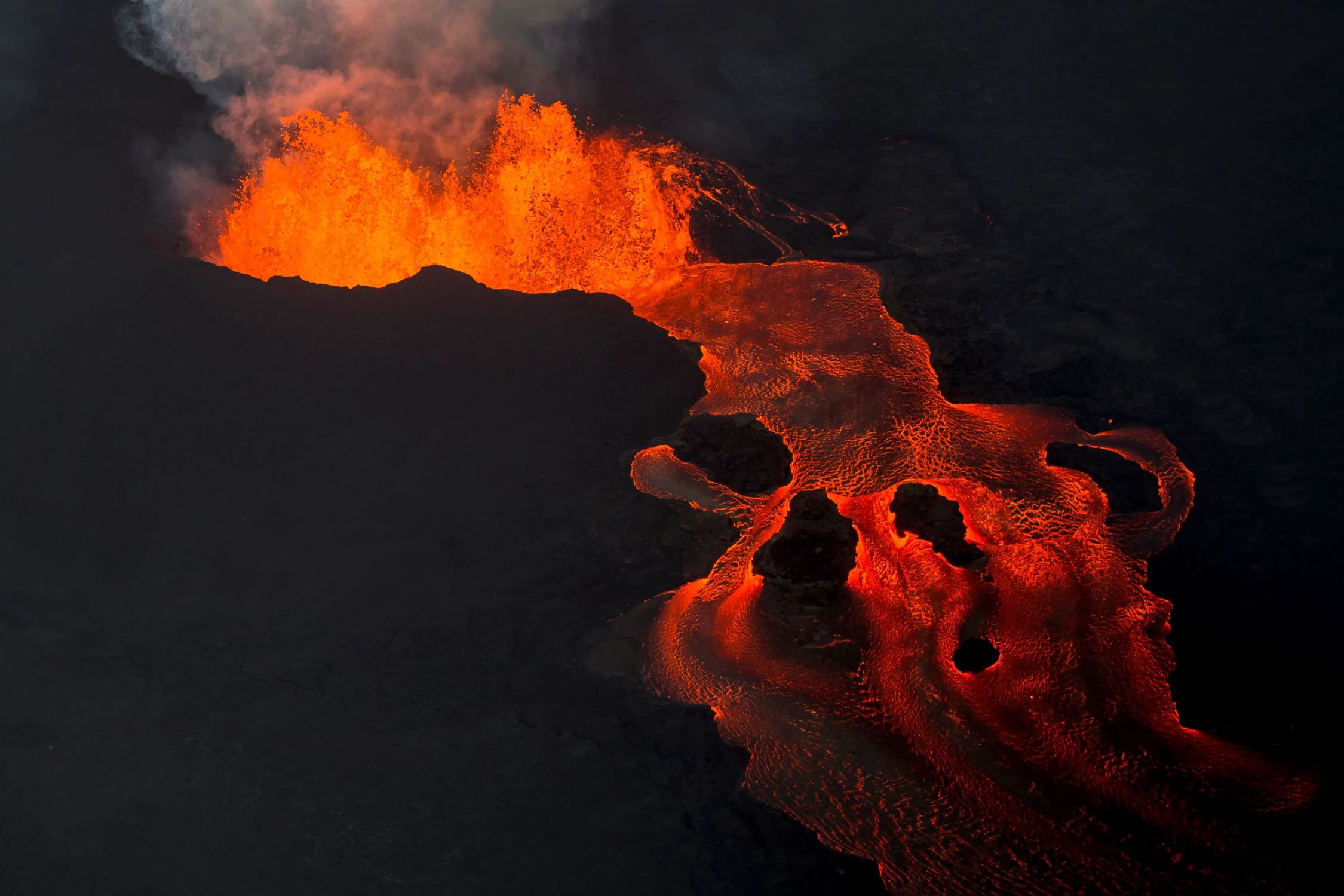Kilauea Volcano – Hawaii’s Active Lava Flows

Have you ever wondered what it's like to witness Kilauea Volcano in action? Located on the Big Island of Hawaii, this natural wonder is one of the most active volcanoes on Earth. Imagine standing on the edge of a lava field, feeling the heat radiate from the ground, and watching molten rock flow like a river. Kilauea has been erupting almost continuously since 1983, creating new land and reshaping the island's landscape. Whether you're an adventure seeker or a nature lover, visiting Kilauea offers a unique experience you won't forget. Ready to learn more about this fiery giant? Let's dive in!
Witness the Power of Kilauea Volcano
Kilauea Volcano, located on Hawaii's Big Island, is one of the most active volcanoes in the world. Its continuous eruptions have created a landscape that is both beautiful and otherworldly. Here are some must-see spots to experience the raw power and beauty of Kilauea.
1. Halema'uma'u Crater
Halema'uma'u Crater, located within the larger Kilauea Caldera, is a sight to behold. This massive crater has been the site of numerous eruptions and is often filled with a glowing lava lake.
- Best Time to Visit: Early morning or late evening for the best views of the lava glow.
- What to Bring: Binoculars for a closer look at the lava lake.
2. Thurston Lava Tube
Walk through a tunnel formed by flowing lava at Thurston Lava Tube. This natural wonder offers a unique glimpse into the volcanic processes that shape the island.
- Best Time to Visit: Midday when the tube is well-lit by natural light.
- What to Bring: A flashlight if you want to explore the darker sections.
3. Chain of Craters Road
Drive along Chain of Craters Road to see a series of craters formed by past eruptions. This scenic drive offers numerous viewpoints and hiking opportunities.
- Best Time to Visit: Anytime, but early morning provides cooler temperatures.
- What to Bring: Plenty of water and a camera for stunning photos.
4. Pu'u 'O'o Vent
Pu'u 'O'o Vent has been erupting almost continuously since 1983. This vent has created vast lava fields and offers a dramatic view of active lava flows.
- Best Time to Visit: Check current eruption activity before planning your visit.
- What to Bring: Sturdy shoes for walking on uneven lava fields.
5. Kalapana Lava Viewing Area
Kalapana Lava Viewing Area provides a safe and accessible way to see active lava flows entering the ocean. The sight of molten lava meeting the sea is truly unforgettable.
- Best Time to Visit: Sunset for the most dramatic views.
- What to Bring: A jacket as it can get windy and cool near the ocean.
6. Kilauea Iki Crater
Hike across the floor of Kilauea Iki Crater, which last erupted in 1959. This hike takes you through a landscape of hardened lava and steam vents.
- Best Time to Visit: Early morning to avoid the heat.
- What to Bring: Good hiking boots and plenty of water.
7. Jaggar Museum and Overlook
Learn about the science of volcanology at Jaggar Museum and enjoy panoramic views of Kilauea Caldera from the overlook.
- Best Time to Visit: Late afternoon for the best lighting.
- What to Bring: A notebook if you want to jot down interesting facts.
8. Devastation Trail
Walk along Devastation Trail to see the aftermath of a 1959 eruption. This short trail offers a stark contrast between lush forest and barren lava fields.
- Best Time to Visit: Anytime, but morning offers cooler temperatures.
- What to Bring: Comfortable walking shoes and a hat for sun protection.
9. Mauna Ulu
Mauna Ulu, a smaller shield volcano, erupted from 1969 to 1974. Hike to the summit for incredible views of the surrounding lava landscape.
- Best Time to Visit: Early morning to avoid the heat.
- What to Bring: A camera for capturing the expansive views.
10. Volcano House
Stay at Volcano House, a historic hotel located within Hawaii Volcanoes National Park. Enjoy stunning views of Kilauea Caldera right from your room.
- Best Time to Visit: Anytime, as the views are spectacular day and night.
- What to Bring: A sense of adventure and curiosity.
Experiencing Kilauea's Wonders
Kilauea Volcano offers a unique adventure. Its active lava flows create a mesmerizing sight, drawing visitors from around the world. Exploring the Hawaii Volcanoes National Park provides a chance to witness nature's raw power and beauty. Remember to stay safe by following guidelines and respecting the environment. Whether you're hiking through lush rainforests or standing at the edge of a steaming crater, Kilauea promises unforgettable memories. This natural wonder is a must-see for anyone visiting Hawaii. From the vibrant landscapes to the thrilling experience of seeing lava up close, Kilauea is a testament to the Earth's dynamic forces. Plan your trip, pack your essentials, and get ready for an adventure like no other. Kilauea's wonders await, offering a glimpse into the planet's fiery heart.

